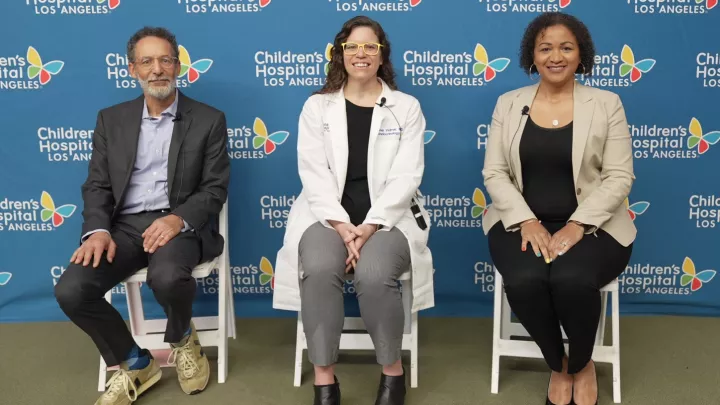
Q&A: Navigating New Pediatric Obesity Guidelines
Earlier this year, the American Academy of Pediatrics (AAP) released the first new clinical practice guidelines for youth living with obesity in 15 years. The updated guidance recommends early, comprehensive treatment with concurrent use of intensive lifestyle modifications, obesity pharmacotherapy and bariatric surgery.
The guidelines have stirred up plenty of controversy, but for Alaina Vidmar, MD, Medical Director of Obesity Medicine and Bariatric Surgery at Children’s Hospital Los Angeles, they’ve been a breath of fresh air. Dr. Vidmar—who has been featured in multiple media outlets this year, including NBC News and The Wall Street Journal—shares her thoughts on this new approach and why it was so urgently needed.
What was the biggest change in these new guidelines?

This is the first time that clinical guidelines have specifically acknowledged that pediatric obesity is a chronic disease. It is not the fault of the patient or family; it is a multifactorial, biological chronic condition that requires diagnosis and early treatment. This is an approach that our clinic and many others around the country had already been taking. The aim is to prevent the life-limiting complications that arise for youth living with obesity over their lifespan.
What it means for physicians is that when patients present with obesity, they should offer comprehensive treatment, which is lifestyle modification, medications and surgery as appropriate. Treatment should be based on the severity of the disease, but the guidance is clear that we shouldn’t be taking a watchful waiting approach, hoping that something magical is going to occur. Because it doesn’t. We know the natural history of this disease. We are doing more harm by doing nothing than by doing the best we can with the tools we have.
Why was this shift important?
There was a deep need for this to happen. The analogy I like to use is asthma. If a child goes to the emergency room with an asthma exacerbation and has low oxygen levels, the physician might note that the child lives next to a freeway, and both parents smoke cigarettes—which are known environmental factors that contribute to asthma exacerbations.
But the doctor still writes the prescription for steroids. No one suggests that you treat that child only by lobbying to get rid of cars or sending the parents to anti-nicotine classes. Because the child is going to die without those steroids.
To me, pediatric obesity is the same. Is the environment playing a role? One hundred percent! But the answer is not just to tackle the environment. We have to treat the kid in front of us and try to prevent serious complications like diabetes and fatty liver.
How do you respond to those who worry that the new guidelines will lead to eating disorders?
The evidence shows that eating disorders are also multifactorial, complex chronic diseases. I agree that we need to be thoughtful in how we balance care for youth living with both obesity and disordered eating behaviors, and much more work needs to be done to learn how to best do this. My hope is that we can all come together in this effort.
That said, I think there is a deep-seated fear that if we talk about weight, we will cause eating disorders. There have been some really elegant studies that have shown that for some youth living with obesity, being part of a weight management program actually improves their disordered eating behaviors. That’s why it is so important to frame our goals of care. We are not aiming for a number on the scale or a size of the body, but the prevention of life-limiting complications.
These weight-loss medications are still new. Are you concerned about long-term effects?
It’s true that we don’t have data on what it means to be on an obesity medication for a lifetime, and we need to balance potential risks with potential benefits. But we do know quite a bit about it means to live with severe obesity for 80 years, so we need to be thoughtful about comparing appropriate risks to each other.
Right now, the No. 1 cause of a liver transplant in a young adult is fatty liver, which is due to obesity. Rates of Type 2 diabetes are increasing in youth, and their disease is more aggressive and severe. Heart attacks in young adults are on the rise. Again, what the AAP guidelines are saying is that we’re doing more harm by doing nothing. We have to do the best we can with the tools we have to reduce the risks of life-limiting complications. And that might mean that on visit one, you’re offering medication.
Are food and lifestyle changes still important in tackling obesity?
Absolutely. We need a comprehensive approach, and that means we need lifestyle modification, and we need medication and surgery as appropriate.
Certainly, we want to prevent obesity as much as possible! But prevention alone is not enough. Let’s not forget about the children where we haven’t prevented anything. Those are the patients we have to treat.


